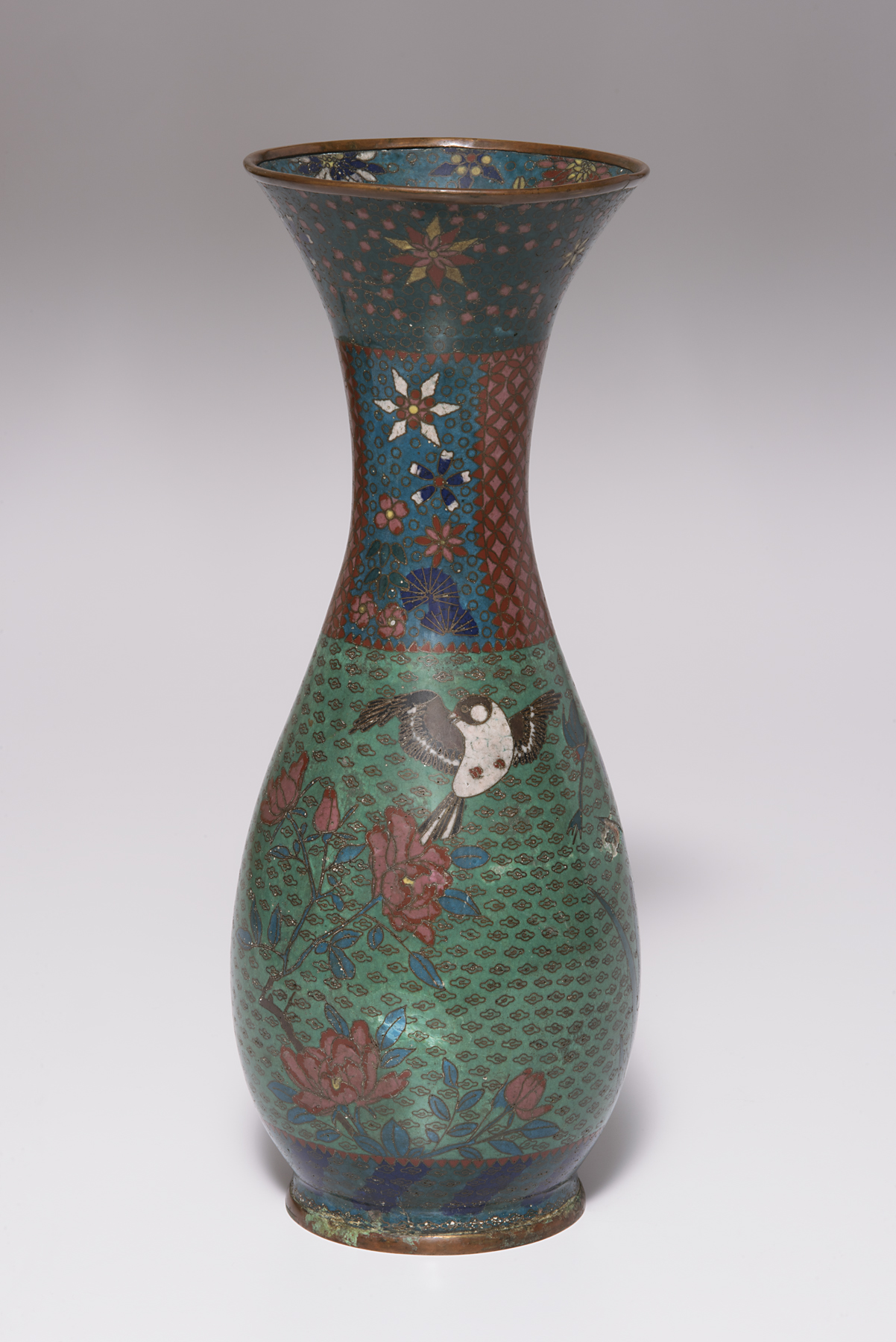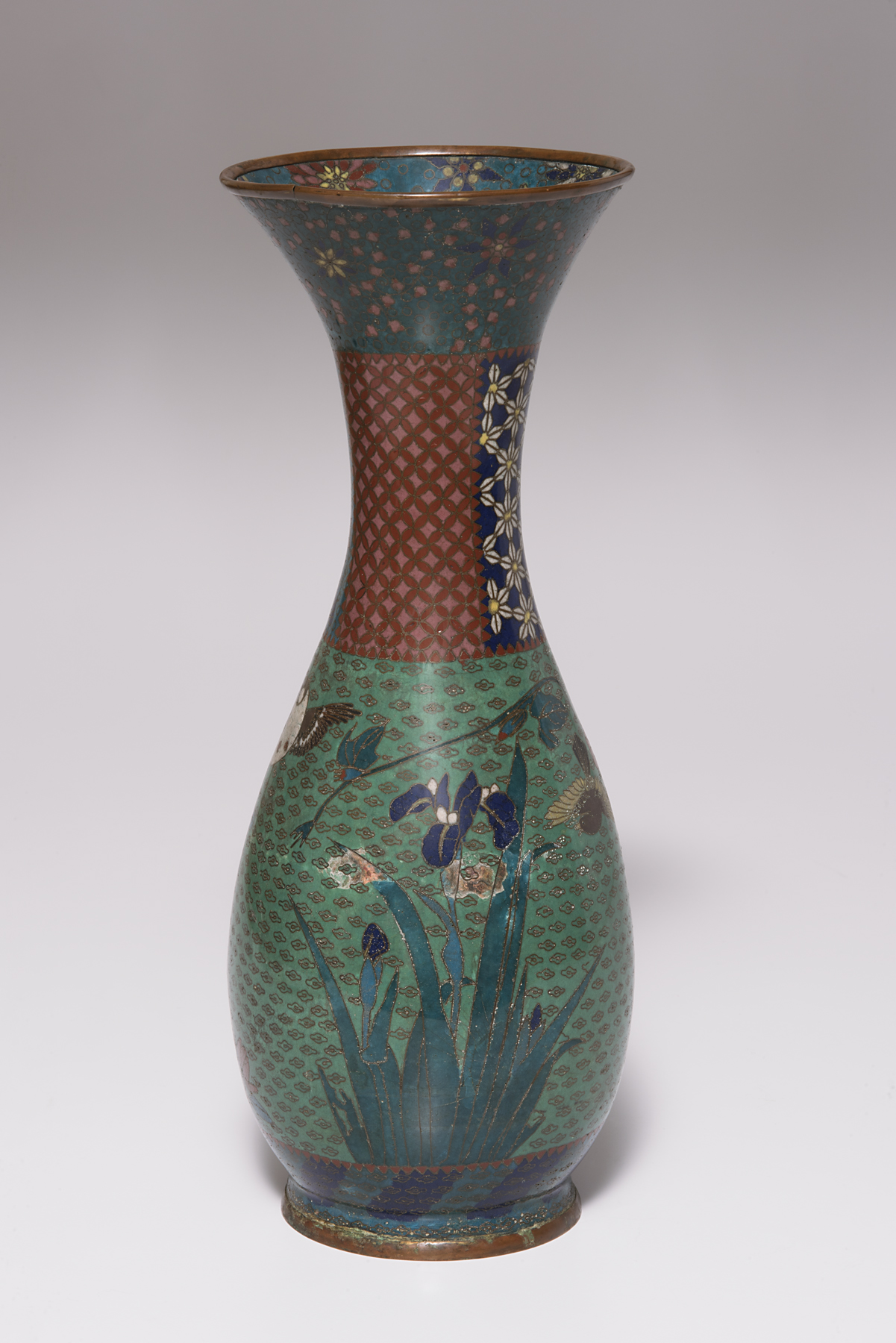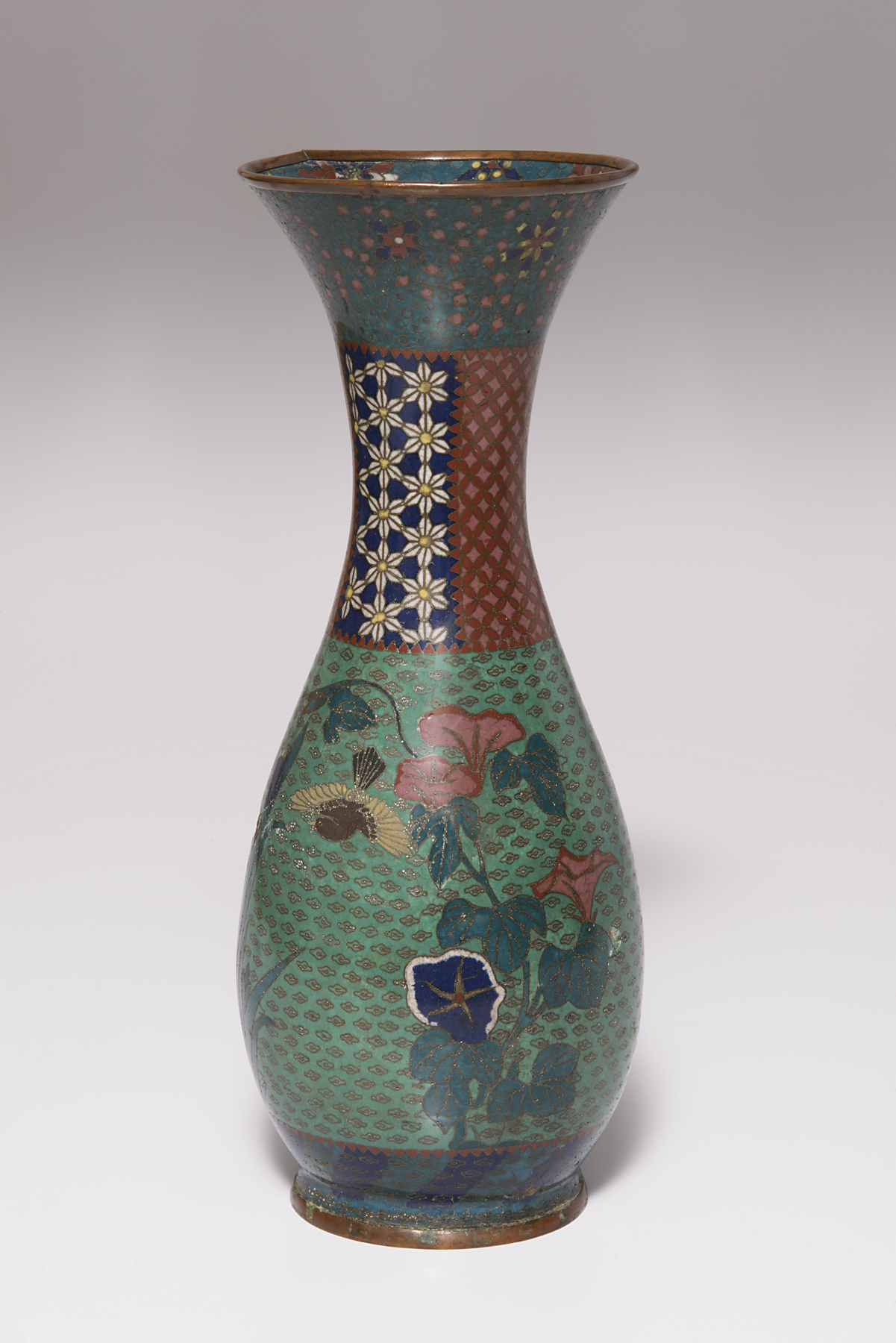vase, unknown maker from Japan
Artwork Overview
vase
, Meiji period (1868–1912)
Where object was made: Japan
Material/technique: cloissoné
Dimensions:
Object Height (Height): 34.92 cm
Object Height (Height): 13 3/4 in
Object Height (Height): 34.92 cm
Object Height (Height): 13 3/4 in
Credit line: William Bridges Thayer Memorial
Accession number: 1928.3510
Not on display
If you wish to reproduce this image, please submit an image request



